Are you tired of damaging your hair every time you wear a ponytail? With the proper technique and some simple tricks, you can avoid breakage and keep your locks healthy and strong.
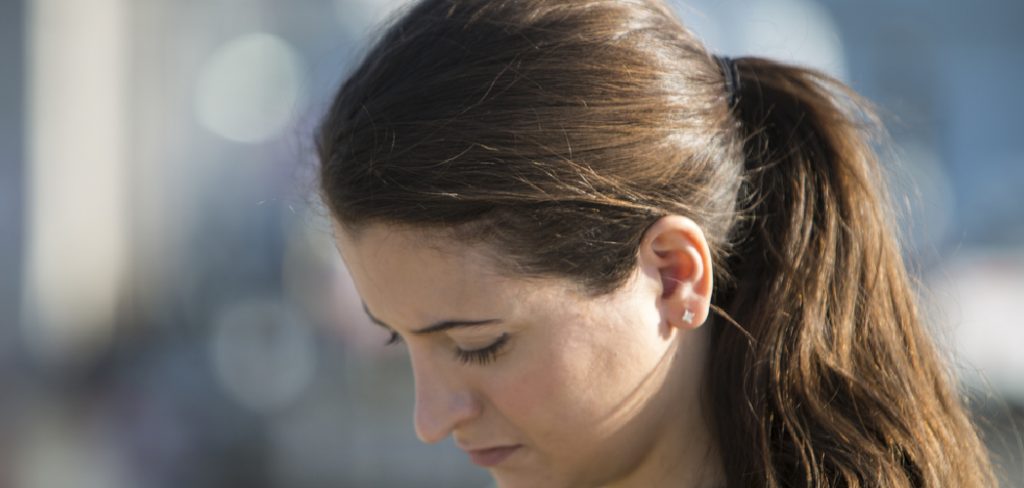
Ponytails are a timeless and versatile hairstyle that can effortlessly elevate any look. However, wearing ponytails too tightly or frequently can damage hair and breakage. To ensure the health and vitality of your hair while enjoying the convenience and style of a ponytail, it’s essential to follow a few simple guidelines.
In this guide on how to wear a ponytail without damaging hair, we’ll explore tips and techniques to help you wear a ponytail without compromising the health of your precious strands. Prepare to rock a fabulous ponytail while keeping your hair strong and beautiful!
What Are the Benefits of Wearing a Ponytail?
Before we dive into the tips and tricks for wearing a ponytail without damage, let’s first discuss why you might want to wear one in the first place.
- Convenience: Ponytails are an easy and quick hairstyle solution, perfect for busy mornings or when you’re on the go.
- Versatility: From high ponytails to low ponytails, sleek styles to messy ones, countless variations of this classic hairstyle can suit any occasion.
- Hair Protection: Keeping your hair in a ponytail can protect it from environmental factors such as wind and sun exposure, preventing tangles and breakage.
- Face-framing: A ponytail easily showcases your face and features, making it an ideal choice for those with bold makeup looks or statement earrings.
Once you know the benefits of wearing a ponytail, let’s move on to tips on how to wear one without damaging your hair.
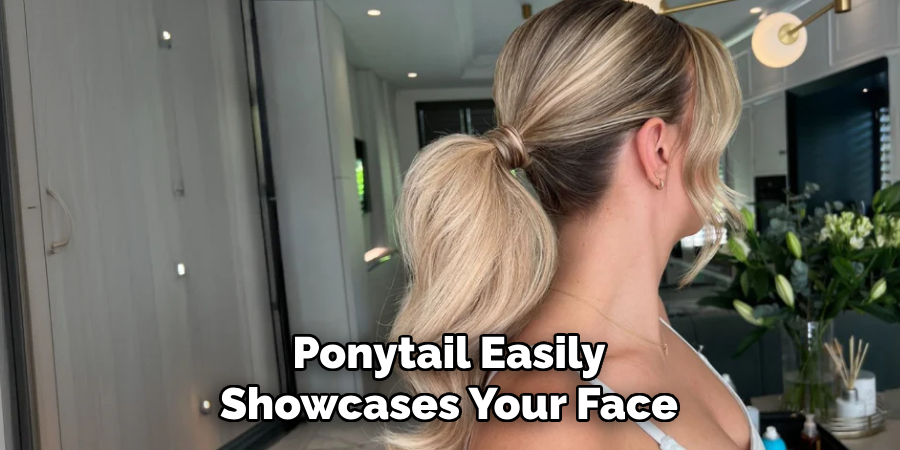
What Will You Need?
- Hair Ties: Look for hair ties made from soft and stretchy materials to avoid pulling and breakage.
- Bobby Pins: These can come in handy for securing flyaways or creating a more intricate ponytail style.
- Hair Serum or Oil: To add moisture and prevent damage, a small amount of serum or oil can be applied to your strands before styling.
- Wide-tooth Comb: This will help detangle your hair without causing any unnecessary strain on the strands.
Once you have all the necessary tools, you can learn to wear a ponytail without damaging your hair.
10 Easy Steps on How to Wear a Ponytail Without Damaging Hair
Step 1. Choose the Right Hair Tie
Avoid using hair ties with metal parts or too tight ones, as they can pull on your hair and cause breakage. Instead, opt for fabric-covered elastics or spiral hair ties that are gentle on your strands. These hair ties allow you to secure your ponytail without placing too much tension on your hair. Don’t tie your ponytail too tightly as this can also lead to damage, aim for a loose but secure hold.
Step 2. Prep Your Hair
Before pulling your hair into a ponytail, ensure it is properly prepped to minimize damage. Start by gently detangling your hair using a wide-tooth comb or a brush designed to reduce breakage. If your hair feels dry or brittle, consider applying a small amount of leave-in conditioner or a lightweight hair serum to add extra moisture and protection. This step will reduce friction and make styling easier while keeping your strands healthy.
Step 3. Avoid Tight Ponytails
One of the main causes of hair damage related to ponytails is tying them too tightly. A tight ponytail can strain your hair and scalp, leading to breakage and even hair loss over time. Instead, aim for a firm but gentle hold.
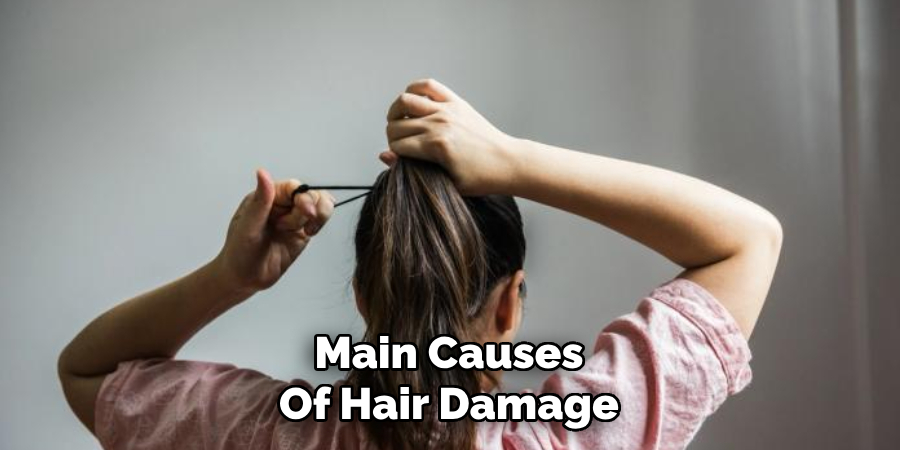
If you need extra security, consider reinforcing your ponytail with discreetly placed bobby pins rather than tying it tighter. Alternating the position of your ponytail—high, mid, or low—on different days can also help prevent repeated stress on the same area of your scalp.
Step 4. Use Heat Sparingly
If you prefer a sleek ponytail look and use heat tools to achieve it, be mindful of how often you apply heat. Excessive heat styling can weaken your hair and make it more prone to breakage. Always use a heat protectant spray before using flat irons, curling wands, or blow dryers. For a healthier option, try styling your ponytail with heat-free methods, such as smoothing your hair with a boar bristle brush or using a silk scarf for a polished look.
Step 5. Choose Looser Hairstyles
Wearing a ponytail doesn’t always have to mean pulling your hair back tightly. Opt for looser ponytail styles to reduce tension and stress on your hair. A relaxed, low ponytail or a messy ponytail can look stylish while being gentler on your strands.
Looser hairstyles also allow your scalp to feel more comfortable and prevent issues like headaches or scalp sensitivity caused by tight hairstyles. Remember, a slight imperfection in your ponytail can add charm and keep your hair healthier in the long run.
Step 6. Avoid Sleeping with a Ponytail
Sleeping with your hair tied in a ponytail can lead to breakage and unnecessary stress on your strands. Instead, consider letting your hair down before bed to give it a rest from the constant tension. If you prefer to keep your hair secure while sleeping, use a loose braid or a satin scrunchie to gather your hair gently. Satin or silk pillowcases can also minimize friction, keeping your hair smoother and less prone to damage overnight.
Step 7. Avoid Wet Hair Ponytails
Tying your hair back while still wet can make it more susceptible to damage. Wet hair is weaker and more elastic, stretching and breaking more easily under tension. Always allow your hair to air dry or gently towel-dry it before styling it into a ponytail. If you’re in a hurry, try applying a lightweight leave-in conditioner on damp hair and loosely gathering it to avoid putting too much stress on your locks.
Step 8. Take Breaks Between Ponytails
Even if ponytails are your go-to hairstyle, it’s essential to give your hair a break now and then. Repeatedly styling your hair in the same way can lead to tension-related damage. Incorporate different hairstyles into your routine, such as braids, buns, or leaving your hair down, to give your scalp and strands a rest. This variety can help keep your hair healthier and more resilient over time.
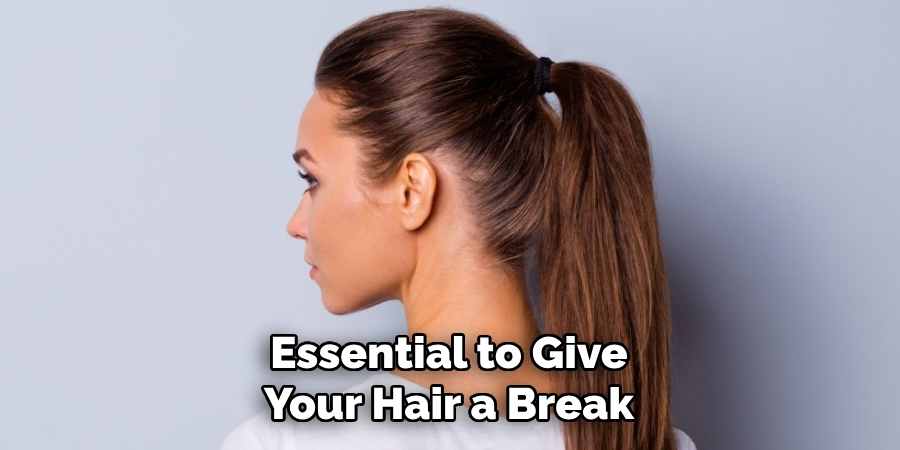
Step 9. Trim Split Ends Regularly
Keeping your hair healthy involves more than just styling habits—it’s also about maintaining its overall condition. Regular trims can prevent split ends from traveling up the hair shaft and causing more damage. Healthier hair is better equipped to handle styling stress, including ponytails. Aim to get a trim every 6–8 weeks or as needed to keep your hair looking and feeling its best.
Step 10. Incorporate Hair Treatments
Treating your hair with occasional deep conditioning or protein masks can help strengthen and nourish your strands. Look for treatments designed to repair damage and restore moisture.
Healthier, hydrated hair will resist breakage from styling and everyday wear. You can even use natural ingredients, like coconut oil or aloe vera, for a DIY hair treatment at home. Taking time to pamper your hair is a great way to ensure it stays strong and beautiful while you enjoy rocking your favorite ponytails.
By following these simple steps, you can wear a ponytail without causing unnecessary damage to your hair.
5 Things You Should Avoid
To keep your hair healthy and protected while wearing a ponytail, here are five things you should avoid:
- Tight Hairstyles: Avoid pulling your hair too tightly when styling your ponytail. Excessive tension can lead to hair breakage and damage over time.
- Elastics with Metal Parts: Avoid using hair ties with metal parts, such as metal clasps or exposed rubber bands. These can snag and break your hair, causing unnecessary damage.
- Frequent Position Changes: Limit the number of times you adjust the position of your ponytail throughout the day. Constant pulling and readjusting can weaken your hair strands and increase the likelihood of breakage.
- Sleeping with a Tight Ponytail: Avoid sleeping with your hair tied up tightly in a ponytail. Opt for a loose braid or a satin hair tie to minimize hair breakage and tension while you sleep.
- Overusing Heat Styling Tools: Excessive use of heat-styling tools like straighteners or curling irons can weaken your hair and make it more prone to damage. If you must use these tools, remember to apply a heat protectant spray and use them on the lowest heat setting possible.
By avoiding these common pitfalls, you can enjoy the versatility of ponytail hairstyles while keeping your hair healthy and damage-free.
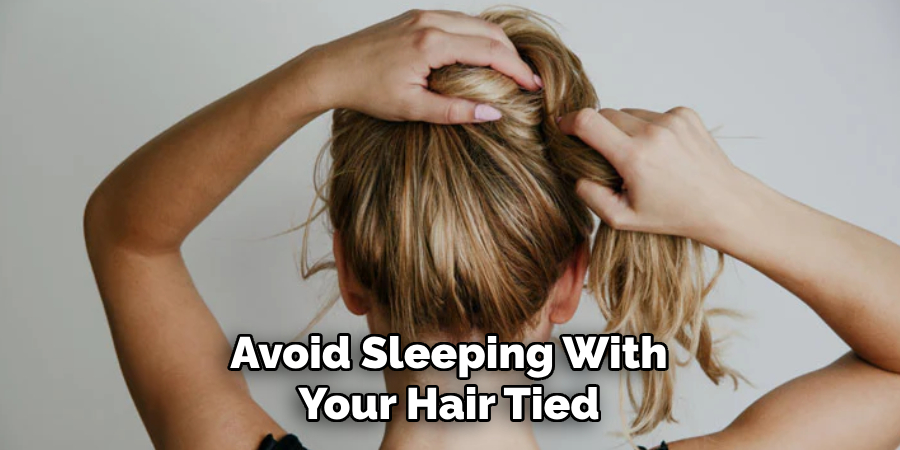
Conclusion
In conclusion, how to wear a ponytail without damaging hair can be a convenient and stylish way to manage your hair.
However, it is essential to take proper precautions to prevent damage and maintain the health of your hair. By following these tips on wearing a ponytail without damaging your hair, you can enjoy the benefits of this classic hairstyle while keeping your locks strong and beautiful.
Remember to keep your ponytail loose, avoid using harsh elastics or frequently adjusting its position, and limit heat styling.
With these simple changes in your routine, you can rock a ponytail with confidence and healthy hair. So go ahead and embrace this timeless hairstyle with ease! Happy styling!
About the Author
Jane Hubbard is a passionate beauty expert with a wealth of experience in makeup, hair, and overall beauty techniques. After years of working as a hairdresser specialist, she followed her entrepreneurial spirit and started her own consultancy business.
Jane has always been driven by her desire to help others feel confident in their own skin, and she does this by sharing her knowledge, experiences, and practical beauty tips. Through her consultancy, she empowers individuals to embrace their unique beauty, offering tailored guidance that boosts both self-esteem and personal style.
Professional Focus
- Specializes in makeup, hairstyling, and beauty consulting.
- Provides personalized beauty advice, tips, and techniques to help individuals feel confident in their appearance.
- Dedicated to staying up-to-date with the latest industry trends and developments.
- Passionate about creating a comfortable and empowering experience for every client.
Education History
- University of Craft and Design – Bachelor of Fine Arts (BFA) in Woodworking and Furniture Design
- Woodworking Apprenticeships – Extensive hands-on training with skilled craftsmen to refine carpentry and furniture making techniques
- Online Courses & Masterclasses – Continued education in advanced woodworking techniques, design principles, and specialized tools
Expertise:
- Makeup artistry, hairstyling, and beauty consulting.
- Personalized beauty techniques to enhance confidence and self-expression.
- Educating clients on how to maintain their beauty routines at home.
